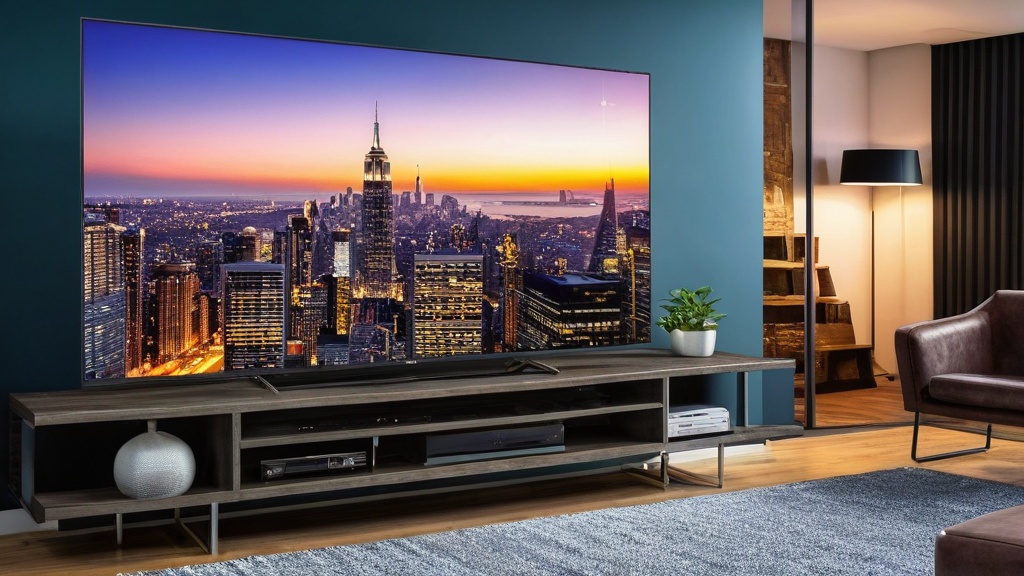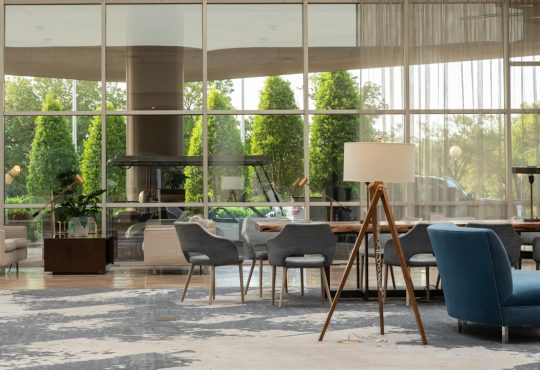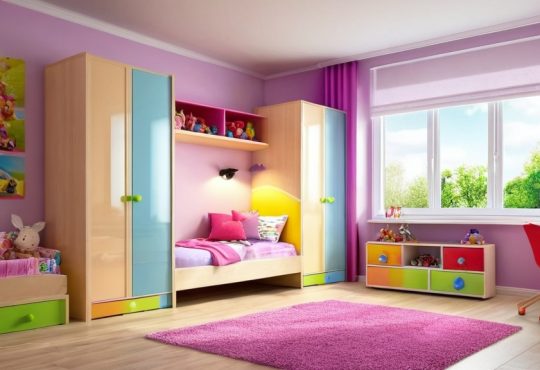
Custom solutions ensure that an interior perfectly matches your wishes
When you walk into a store to buy a piece of furniture, you are often faced with a compromise. The sofa is the right color but the wrong size. The bookshelf fits the wall but doesn’t have the right configuration for your books and objects. The dining table is beautiful, but it feels just a little too large for the room. These are the common challenges of furnishing a space with mass-produced items. They are designed to appeal to a broad average, but very few of us are “average.” Your home, your needs, and your personal style are unique.
This is where the concept of custom solutions comes into play. A custom-designed interior is not about extravagance; it is about precision, functionality, and creating a space that works in complete harmony with your life. It is the difference between an off-the-rack suit and a bespoke one tailored to your exact measurements. While the former might look acceptable, the latter feels like a second skin, moving with you and fitting perfectly in every dimension. Your home should offer that same level of comfort and personal fit. By opting for custom solutions, you are taking control of your environment, ensuring that every element, from the largest cabinet to the smallest detail, is a direct reflection of your wishes and requirements.
The term “custom” can sometimes be misinterpreted. It often brings to mind simply choosing a different fabric for a chair or a different color for a cabinet. While these are elements of customization, true custom design goes much deeper. It is a comprehensive approach that starts with a blank slate, building a solution from the ground up based entirely on your specific context.
Beyond Color and Fabric: The True Scope
True customization is about fundamentally altering the form and function of an object or space to meet a specific need. It is a process of problem-solving through design.
- Dimensional Precision: A custom-built media unit can be designed to the exact millimeter, fitting perfectly into an alcove, accommodating the specific dimensions of your television and audio equipment, and concealing all wiring for a clean, uncluttered look. A standard unit will always leave gaps or protrude awkwardly.
- Material Selection: You are not limited to the standard oak or walnut veneer offered by a big-box store. A custom solution allows you to choose from a vast library of materials. You might select a specific species of wood for its grain and color, a durable laminate for a high-traffic family area, or a unique metal finish to match other fixtures in your home.
- Functional Innovation: Do you need a coffee table that can be raised to a dining height? A home office desk with integrated cable management and hidden charging stations? A window seat that doubles as a storage chest and a bookshelf? These are the kinds of specific, functional requirements that custom design addresses with elegant and integrated solutions.
The Collaboration Process: Your Vision, The Expert’s Execution
Creating a custom interior is not something you are expected to do alone. It is a partnership between you and a professional—be it an interior designer, an architect, or a skilled craftsperson like a cabinet maker. Your role in this process is to be the expert on your own life.
You provide the vision and the “why.” You understand the daily frustrations of your current space, the flow of your family’s life, and the aesthetic that brings you comfort and joy. The professional’s role is to translate that vision into a tangible, functional, and beautiful reality. They bring technical knowledge, an understanding of materials, and the creative skill to design a solution that is not only practical but also well-proportioned and aesthetically pleasing. This dialogue is central to the success of any custom project. It ensures that the final product is not just a piece of furniture, but a resolution to a problem you’ve been living with.
Solving Practical Problems with Tailored Design
Perhaps the most compelling argument for custom solutions lies in their ability to solve real-world, practical problems that off-the-shelf products simply cannot address. Your home is a unique container, with its own quirks, challenging corners, and specific spatial dynamics. Tailored design acts as the key that perfectly fits the lock of your home’s unique challenges.
Maximizing Awkward and Unused Spaces
Nearly every home has them: the slanted wall under the eaves, the narrow hallway that feels like wasted space, or the awkward nook next to a fireplace. These areas are often left empty or filled with ill-fitting furniture, becoming dead zones within the home.
A custom solution can transform these liabilities into assets.
- Under the Stairs: This classic “problem area” can become a highly functional zone. Custom-built drawers that follow the angle of the stairs can provide deep, accessible storage for shoes, coats, or sports equipment. It could also be transformed into a compact home office nook or a cozy reading bench with integrated bookshelves.
- Sloped Ceilings: In an attic or loft room, standard rectangular wardrobes and shelves are incredibly inefficient, leaving large triangular gaps of wasted space. A custom wardrobe can be built to follow the exact pitch of the roof, maximizing every inch of vertical storage and creating a seamless, built-in look.
- Odd Corners and Alcoves: A shallow alcove that is too small for a standard armchair can become the perfect home for a floor-to-ceiling bookshelf. An odd corner in a kitchen can be fitted with custom pantry shelving that makes use of a space that would otherwise be empty.
Integrating Technology Seamlessly
Our lives are filled with technology, and with it comes a tangle of wires, chargers, and black boxes. A primary goal of modern interior design is to integrate this technology without letting it dominate the aesthetic of a room. Custom furniture is the ideal vehicle for this. A bespoke media console can be designed with dedicated, ventilated compartments for gaming systems and streaming devices, with channels and conduits to hide every single cable from view. A home office desk can have power outlets and USB ports built directly into the surface, eliminating the need for clumsy power strips. This integration creates a calm and organized environment where technology serves you without creating visual clutter.
Designing for Specific Lifestyles and Needs
A home should support the way you live. A family with young children has very different needs from a retired couple or a single professional who works from home. Custom design allows an interior to be fine-tuned for these specific lifestyles. For a family, this might mean designing a mudroom with custom cubbies for each family member, using durable, easy-to-clean materials, and specifying rounded corners on furniture for safety. For someone with mobility challenges, it could involve designing a kitchen with countertops at a specific height, pull-out shelves for easy access, and wider pathways for navigation. Your home stops being a generic box and becomes an active partner in supporting your daily routines.
The Aesthetic Advantage: Crafting a Cohesive and Personal Space

Beyond pure functionality, custom solutions offer an unparalleled level of aesthetic control. They empower you to create a space that is not just a collection of nice things, but a unified environment that tells a consistent and personal story. It allows you to be the author of your own home’s visual narrative.
Achieving a Unified Design Language
When you furnish a room piece by piece from different stores, you often end up with a collection of items that don’t quite speak to each other. The wood tones might clash, the metal finishes might be slightly different, or the overall styles might feel disconnected.
With custom design, you can establish a consistent “design language” that flows through the entire space. You can ensure that the wood used for the kitchen cabinets is the same species and finish as the custom vanity in the adjoining bathroom and the built-in bookcase in the living room. The profile of a cabinet door can be echoed in the design of an interior door. This continuity creates a sense of calm, intention, and harmony. The space feels considered and whole, like a piece of music where all the instruments are playing in the same key.
Expressing Personal Style Authentically
Interior design trends come and go. What is popular today may look dated in five years. Relying on mass-market items often means buying into these fleeting trends. Custom design offers a way to step outside of this cycle and create a space that is a true expression of your own unique style—one that will feel right for years to come.
You are not limited to the four or five options a manufacturer has decided are fashionable this season. You can draw inspiration from a piece of art you own, a memory from your travels, or a particular architectural style you admire. You can combine materials and forms in a way that is meaningful to you, resulting in a space that is genuinely one-of-a-kind. Your home becomes less of a showroom for current trends and more of a personal gallery that reflects your history, your passions, and your identity.
The Investment Aspect: Quality, Durability, and Long-Term Value
| Aspect | Metrics |
|---|---|
| Quality | Customer satisfaction rating |
| Quality | Product defect rate |
| Durability | Warranty period |
| Durability | Expected lifespan |
| Long-Term Value | Resale value |
| Long-Term Value | Cost of maintenance |
It is a common perception that “custom” is synonymous with “expensive.” While a custom-built piece will often have a higher upfront cost than a mass-produced alternative, it is more accurate to view it as an investment rather than a simple purchase. The value of a custom solution is realized over its entire lifespan, in its durability, its sustainability, and its contribution to your property’s overall worth.
The Craftsmanship Difference: Built to Last
Mass-produced furniture is typically designed for efficient manufacturing and shipping. This often involves the use of lower-quality materials like particleboard with thin veneers, and construction methods that prioritize speed over strength, such as staples, glue, and cam-lock fasteners. These pieces can look good initially, but they often do not stand up well to the rigors of daily use, and they are difficult, if not impossible, to repair.
A custom piece, by contrast, is built by a skilled craftsperson with a focus on longevity. It is typically made from solid wood or high-quality plywood and constructed using time-honored joinery techniques like mortise-and-tenon or dovetail joints. These methods create incredibly strong and stable connections that can last for generations. The finish is applied with care to protect the material and enhance its beauty. This commitment to quality means you are acquiring an heirloom piece, not a disposable item.
A Sustainable Choice: Reducing Waste and Replacement
The “fast furniture” industry contributes to a significant amount of waste, as poorly made items are discarded and replaced every few years. Opting for a well-made custom solution is an inherently sustainable choice. By investing in a piece that is built to last a lifetime, you are breaking the cycle of consumption and disposal. Furthermore, working with local artisans and craftspeople often means you can choose locally sourced or reclaimed materials, reducing the carbon footprint associated with long-distance shipping and supporting your local economy.
Getting Started: Your Path to a Custom Interior
The idea of commissioning custom work can seem intimidating, but it is a manageable and rewarding process when approached thoughtfully. It begins not with a designer, but with a period of careful reflection on your own part.
Defining Your Needs and Desires
Before you can communicate your vision to a professional, you must first be clear on it yourself. Take time to analyze your current space. What works and what doesn’t? Make a list of the daily frustrations. Is it a lack of storage? Poor lighting? An awkward layout that impedes traffic flow? Also, think about how you want to feel in the space. Do you want it to be cozy and intimate, or open and energizing? Gather images that appeal to you from magazines or online platforms, paying attention not just to the overall look but to specific details, materials, and clever functional ideas. This preparation will be invaluable when you begin to talk with professionals.
Finding the Right Professional Partner
The success of your project will depend heavily on the rapport you have with your designer or craftsperson. Look for a professional whose portfolio resonates with your personal style. During an initial consultation, pay close attention to how they listen. Do they ask insightful questions about your lifestyle? Do they seem genuinely interested in solving your problems, or are they pushing their own signature style? A great professional partner will act as a guide and a collaborator, helping you refine your ideas and steering you toward the best possible solutions for your budget and your goals.
In the end, choosing custom solutions is about choosing to live in a space that is a true extension of yourself. It is an investment in daily comfort, long-term quality, and personal expression. By tailoring your environment to your exact needs and wishes, you transform your house from a simple structure into a home that not only shelters you but actively enhances your life. It becomes a space where every detail feels right, because every detail was chosen by you, for you.
When it comes to creating a living space that truly reflects your personal style and preferences, custom solutions are key. These tailored approaches ensure that every aspect of your interior design aligns perfectly with your vision. For those looking to enhance their home environment further, considering energy efficiency can be a valuable addition. An article that complements this idea is “Tips voor het kiezen van energiezuinige apparaten“, which provides insights into selecting energy-efficient appliances. By integrating such appliances into your custom-designed space, you not only achieve aesthetic harmony but also contribute to a more sustainable and cost-effective home.
FAQs

What are custom interior solutions?
Custom interior solutions refer to the process of creating and designing interior spaces according to the specific needs and preferences of the client. This may involve custom furniture, fixtures, and finishes that are tailored to the client’s requirements.
What are the benefits of custom interior solutions?
Custom interior solutions allow for a personalized and unique design that perfectly matches the client’s wishes. It also ensures that the space is optimized for functionality and aesthetics, creating a truly bespoke environment.
What are some examples of custom interior solutions?
Examples of custom interior solutions include custom-built furniture, bespoke cabinetry, personalized lighting designs, and tailored color schemes. These elements are designed and crafted to fit the specific requirements of the space and the client.
How are custom interior solutions created?
Custom interior solutions are created through a collaborative process between the client and a team of designers, architects, and craftsmen. This process involves understanding the client’s needs, developing a design concept, and then executing the custom solutions through skilled craftsmanship and attention to detail.
What are the considerations when choosing custom interior solutions?
When choosing custom interior solutions, it is important to consider the client’s lifestyle, preferences, and budget. It is also essential to work with experienced professionals who can bring the client’s vision to life while ensuring functionality and quality.



